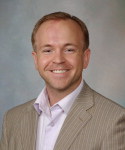The experience of illness is a very personal and specific one. No one can understand what the body is feeling like its owner can, who knows it better than anyone. Resident in my body, I notice the smallest sensations, like the itchy tag on the back of my shirt. But it’s hard to explain this feeling to other people, because it can’t be fully described just by talking about its triggering event. The same shirt probably feels different to someone else. My emotional response to sensation also influences how I experience it. If I’m at the tail end of a bad day, I’ll have a much lower tolerance for scratchy clothes. And when I’m ill, I am the only person who fully understands what my own combination of physical and emotional symptoms feels like. However, expressing all this to my doctor can be complicated. My answer to the question, “How are you feeling?” depends on the day. To help me find the words, I often take inspiration from authors, both old and new, who have taken their turn at the problem.
Even for a symptom common as fever, the words used to describe it depend on each person’s background and experience. Sylvia Plath’s poem “Fever 103°” depicts illness in terms drawn from sources as diverse as Classical myth, botany, and modern dance. An image of a wheezing Cerberus, the three-headed dog of the underworld, appears alongside a giant red flower, evoking the heat and discomfort of fever. “All by myself I am a huge camellia, glowing and coming and going, flush on flush.” A reference to the sudden death of dancer Isadora Duncan rounds out the speaker’s list of symptoms. Even the mundane details of the patient’s life receive attention. Plath describes chicken soup in the most disgusting way possible, calling it “chicken water,” a term that reflects a sick person’s loss of appetite.
The effort to derive some benefit from the suffering caused by illness, however, can encourage a person to dwell on their imagined flaws in a damaging way. In this frame of mind, Plath’s speaker discusses their personal faults, and imagines that by enduring the discomfort of fever, they can become “too pure for you or anyone.” In making this claim, the speaker both separates themselves from their loved ones, and implies there was something wrong with them in the first place. This gives pain a positive effect, and gives meaning to a person’s suffering. It can be tempting to imagine suffering as a sort of character-building exercise in this way. It becomes a strategy to cope with things we can’t change, like the weather. Here in Minnesota, it’s often said that wintertime is good for us.
But scraping the snow off my windshield each morning is easier when I know that spring is coming. What if a future without illness will never arrive? Some diseases are incurable, and become a permanent part of someone’s life. In these cases it’s especially harmful to imagine suffering as a way to fix our shortcomings. Daniel Drubach’s contemporary essay on his experience living with an incurable condition shows a kinder way to live with a permanent state of impaired health. Unlike Plath’s pitiless examination of faults, Drubach’s treatment of himself is gentler. “While I do not hold pity for myself,” he writes, “I do acknowledge a certain degree of compassion.”
If we choose not to see suffering itself as a means of self-improvement, what other benefit can we gain from it? Drubach suggests that one’s personal experience of disease offers a special version of perception that is not accessible to the healthy self. Opening himself to the full experience of his symptoms, Drubach’s condition enables “the discovery of unique visions and sensations, strange emotions, unusual forms of dreaming, and even a bit of magic.” The visual and auditory sensations produced by Drubach’s illness become familiar parts of his life that provide vivid, if not always pleasant, experiences. Drubach accepts the fact that these sensations will occur, though their content cannot be fully predicted or managed. This mindset positions the body’s demands and their influence on one’s life not as limitations, but as a valuable aspect of being human.
It can be frustrating, however, to have to rearrange our lives around our bodies’ imperatives. When I’m sick, I’m sleepy and can’t concentrate. I find myself re-reading the same page over and over through a fog of body aches. As Virginia Woolf writes, “All day, all night the body intervenes.” Like Drubach, Woolf sees the conditions enforced by illness as a chance to experience the world in a different way. This context transforms the sick person’s enforced absence from their daily routine into a chance to see their life from a new perspective. The familiar proportions of one’s priorities and concerns seem to recede. “The whole landscape of life lies remote and fair, like the shore seen from a ship far out at sea.” Viewing my life from this distance, it can be easier to notice what really matters to me. It can even be beneficial to work with the short attention span of illness, when one’s available moments of concentration are “sudden, fitful, intense.” In this state of mind, I notice those moments of pleasure that often escape my attention when I have the energy to multitask. Even a snowplow methodically clearing the street under my window has its own fascination.
I try to be gentle with myself in illness and accept the difficulties I experience, whether it’s the reduced capacity for activity, or the struggle to communicate my experience to others. Illness is not the time to inventory my faults. It’s okay to step back, to do less. Sometimes, just being is enough.

